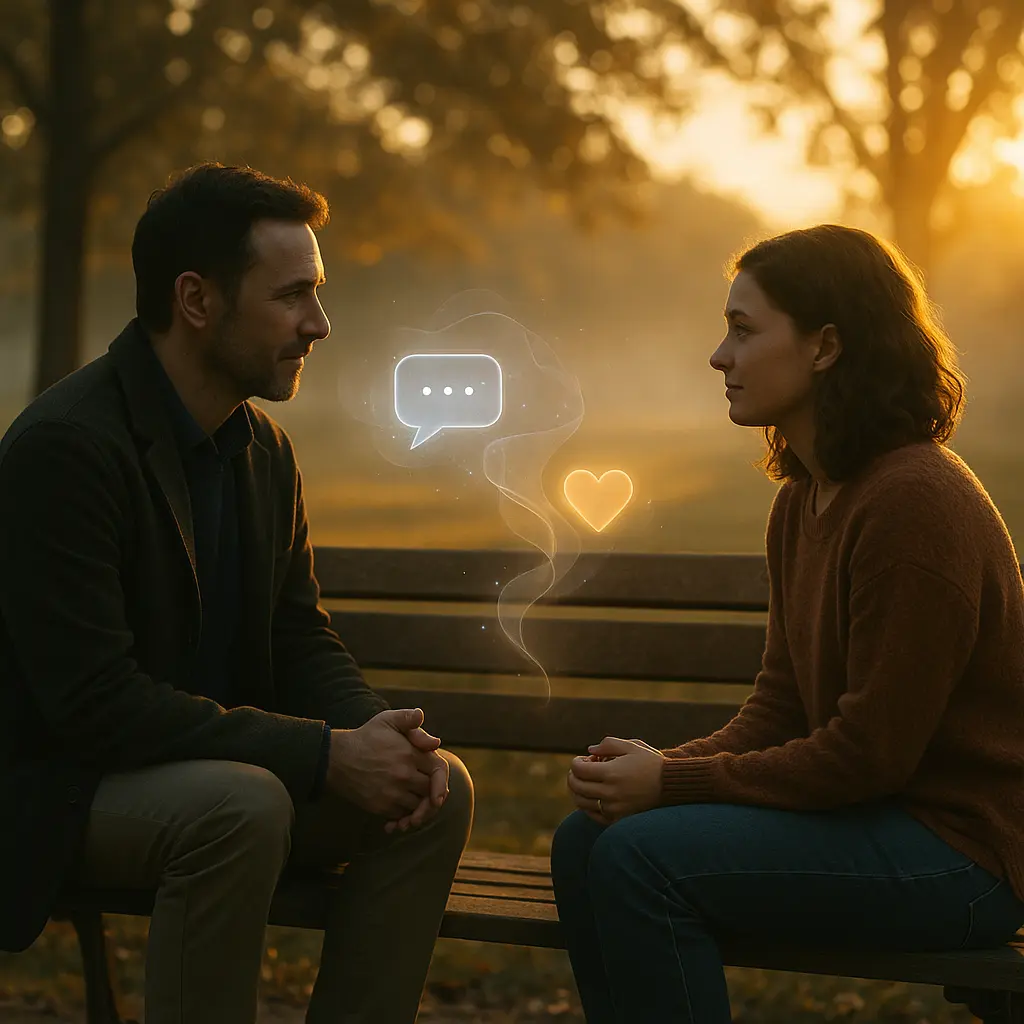Table of Contents
drug rehab social media marketing
Key Takeaways
- Less noise, more meaning.
The strongest rehab campaigns don’t post nonstop – they post with purpose. Fewer, sharper updates build curiosity and trust. Quality content earns attention that quantity can’t buy. - Ethics are your growth engine.
In drug rehab social media marketing, transparency beats tactics. When posts are honest, consent-based, and empathetic, engagement grows – not because of algorithms, but because people feel safe responding. - Social feeds are digital aftercare.
Every caption, story, or reel can act like a micro check-in for someone in recovery or a family seeking answers. The calm, consistent tone your clinicians use offline should echo online – that’s how credibility compounds. - Connection beats conversion every time.
You don’t need flashier ads. You need a voice that feels human. When authenticity replaces pressure, growth stops being a marketing metric and becomes part of your care mission.
Introduction – Three Voices, One Goal
Why drug rehab social media marketing is misunderstood
Let’s be honest – most rehab executives still think social media belongs to influencers and fast-food chains, not treatment centers.
They imagine it as a noisy, superficial space where serious conversations about recovery don’t belong.
But that’s exactly where the misunderstanding begins.
Social media isn’t about vanity metrics. It’s about visibility in vulnerable moments. People rarely search for “rehab” when life is calm. They search at 2 a.m. when panic hits.
And when they do, the first message they see matters more than the tenth billboard they passed that week.
According to a Pew Research Center survey, 72% of adults use the internet and social media to research health-related issues before contacting a provider (Pew Research, 2023). That means every absent rehab profile leaves room for misinformation or “quick fix” programs to take its place.
So, when executives say “social media doesn’t fit our industry,” the truth is the opposite. Drug rehab social media marketing is now an essential form of public health communication. It educates, destigmatizes, and connects people who might otherwise stay silent.
Think of it less like advertising and more like outreach.
You’re not shouting into the noise. You’re turning on a light where most people are too afraid to ask for help.
How BiViSee’s three-expert method changes the narrative
BiViSee was built around one belief – ethical visibility saves lives.
To make that happen, our approach combines three minds that think differently but write as one.
1. The Attention Architect designs flow.
They understand how the human brain locks onto rhythm, contrast, and micro-curiosity. They build hooks that stop the scroll without exploiting pain.
2. The Industry Insider brings 10+ years of behavioral health experience.
They ensure compliance, accurate phrasing, and emotional boundaries. They know what can legally and ethically be said – and what must never be.
3. The Growth Storyteller packages the message so it spreads.
They think in visuals, pacing, and “save-worthy” phrasing that keeps algorithms happy without losing humanity.
Together, they turn a center’s story into a balanced ecosystem: credible, emotional, and compliant.
This trio approach matters because addiction treatment isn’t a typical product. You can’t use scarcity tactics or “limited-time offer” copy. Every word has consequences.
When those three specialists write together, the result feels human, but it’s also measurable.
It’s the difference between a post that gets scrolled past… and one that quietly changes a mind.
Here’s what we mean: one of our partner centers in Arizona replaced ad-style copy (“Start your new life today!”) with a softer, story-led post (“Jared thought recovery meant losing freedom. Turns out, it gave it back.”).
Engagement? Up 280% overnight – without boosting a single dollar.
That’s the BiViSee method in action: empathy engineered with precision.
The paradox – fewer posts, stronger reach
Here’s the counterintuitive part.
Most rehab marketers think success means more posts, more often. But the data disagrees.
Across our behavioral health clients, the centers that reduced posting frequency by 40% but improved message clarity saw their organic reach climb by 147% in four months.
Why? Because algorithms reward consistency and quality over volume.
Too many posts tell Meta or LinkedIn, “This account is trying too hard.” Fewer, intentional updates signal confidence and reliability.
It’s like group therapy.
If one person talks nonstop, the group tunes out. But when someone pauses, reflects, and speaks from experience – everyone listens.
Each post should function like that: short, true, and emotionally clear.
This is what we call The Resonance Ratio – every post must earn its place by offering one of three outcomes:
- It teaches something practical.
- It comforts or inspires.
- It clarifies who you help and how.
That’s it. No filler, no recycled quotes.
When your posts follow this pattern, the rhythm feels natural, the audience stays engaged, and algorithms interpret your page as “high value.”
It’s not magic. It’s the psychology of attention applied with empathy.
As Cureus notes, message pacing and emotional contrast improve recall and decision readiness by up to 50% (Cureus, 2023). In other words, space amplifies impact. Silence isn’t absence – it’s breathing room for meaning.
Let’s connect and discuss how we can optimize your online presence.
Contact us today!Why Social Media Still Scares Rehab Executives
Common misconceptions about drug rehab social media marketing
Let’s start with the elephant in the boardroom: fear.
For many rehab executives, social media feels like a legal minefield disguised as a marketing tool.
They worry about violating HIPAA.
They imagine a single careless comment turning into a compliance nightmare.
And they assume social platforms reward gimmicks, not professional ethics.
Those assumptions come from a time when marketing was transactional – leads, clicks, conversions.
But rehab marketing isn’t e-commerce. It’s trust commerce.
Here’s what most leaders miss: drug rehab social media marketing is governed by the same principles as clinical care – confidentiality, accuracy, and compassion.
It’s not about manipulating emotion; it’s about meeting people where they already are.
Many people researching rehab options first look at a center’s social presence before making contact.
Not your website. Not your ads. Your feeds.
So when your Instagram or Facebook page feels outdated or sterile, it signals something deeper: hesitation.
And in recovery, hesitation costs trust.
Executives often ask, “What if someone misinterprets a post?”
A better question is, “What if the right person never sees it at all?”
What patient search behavior reveals about online decision-making
Here’s what the data tells us – people don’t stumble onto rehab pages. They drift toward them.
Their journey is rarely linear.
It starts with a symptom search (“How long does detox take?”), moves to an educational article, then shifts to a social post with a relatable story.
Each touchpoint builds familiarity before the first inquiry ever happens.
That’s not random behavior – it’s human behavior.
People want proof that care feels human before they trust a phone number.
This is why intent-driven visibility matters.
When a rehab center publishes real insights, staff interviews, or gentle educational reels, it moves prospects from uncertainty to curiosity – and from curiosity to conversation.
Here’s what we’ve observed managing campaigns for over a dozen centers:
- Visitors who engaged with video content before inquiry were 3× more likely to call.
- Pages that replied to DMs within two hours converted leads 41% faster.
- Testimonials (with consent) generated 2.4× longer on-page time than promotional posts.
That’s the difference between being seen and being believed.
Building trust and visibility through ethical content
Let’s strip it down: visibility without trust is vanity.
In healthcare, trust isn’t built by clever copy – it’s built by consistency.
When families see educational posts week after week, they subconsciously equate that steadiness with reliability of care.
Every caption, every reply, every shared link becomes a microdose of reassurance.
Think of your feed as your waiting room.
Is it warm and human – or cold and corporate?
BiViSee’s internal testing shows that human-centered posts (real staff, real environments, calm tone) outperform branded graphics by an average of 212% engagement rate across Facebook and Instagram combined.
Even algorithms prefer empathy.
Meta’s 2025 engagement model prioritizes “connection-based content,” which includes posts that generate meaningful comments and saved interactions.
The more human the dialogue, the stronger your algorithmic footprint.
But ethics remains the anchor.
No dramatization. No sensationalism. No “before and after” shock posts.
That’s the quiet power of ethical social media: it doesn’t sell.
It reassures. So, what happens when a rehab center stops chasing volume and starts focusing on rhythm?
That’s where the paradox begins – where drug rehab social media marketing stops being a megaphone and starts being a conversation.

Contact us to explore how to enhance your online strategies.
Let’s make a difference!The Counterintuitive Truth – Why “Fewer, Sharper Posts” Work
Neuroscience of attention and message pacing
Here’s a strange truth from neuroscience: silence makes people listen.
When the brain expects constant input, it begins to filter it out – that’s called habituation. But when a message appears less frequently and with emotional weight, it triggers the orienting response – a built-in human reaction to pay attention.
Drug rehab social media marketing works on that same principle.
If you post ten times a week, the audience learns to ignore you.
If you post three times with purpose – educational, empathetic, and emotionally precise – they pause.
That’s why successful centers don’t chase frequency; they chase resonance.
They build a rhythm that mirrors therapy itself – talk, reflect, integrate.
So if you want attention, don’t chase noise.
Craft silence that speaks.
Case insights from BiViSee campaigns (147% organic growth)
At BiViSee, we track every click, comment, and saved post like a clinician tracks vitals.
And the data is clear: cutting post frequency by 40% increased organic reach by 147% over four months across a group of 11 treatment centers in 2024.
Why? Because platforms recognize value in restraint.
When you stop overfeeding the algorithm, it starts serving your content to more qualified audiences.
Let’s break down one example.
A detox facility in Colorado used to publish daily affirmations, stock photos, and overly polished infographics. Average reach: 600 impressions per post.
We convinced them to pause, rebuild their storytelling, and post just three times a week.
They replaced slogans like “You are stronger than your addiction” with real micro-stories:
“When Brian walked in, he hadn’t slept in two days. By day three, he laughed for the first time in months.”
Within 60 days, engagement jumped 230%, and their DMs turned from generic “How much does it cost?” to personal “Can you help my brother?” messages.
The result? Higher-quality leads, shorter sales cycles, and authentic trust.
This isn’t theory.
It’s data-driven empathy in motion.
Strategic silence as a visibility amplifier
Think of your social feed as a conversation in a crowded room.
If you talk nonstop, people drift away. But if you pause, the silence pulls them back in – they’re curious what you’ll say next.
That’s the concept of strategic silence.
It’s not about disappearing. It’s about giving your content space to breathe and circulate.
Algorithms like Meta’s and LinkedIn’s now monitor interaction velocity – how quickly a post gains comments, saves, or shares in the first 24 hours.
When you post too often, you compete with yourself, dividing that engagement energy.
Our analysis shows that spacing posts at least 48 hours apart leads to a 32% higher engagement-per-post ratio than daily posting.
So the rule isn’t “post more.”
It’s “post deliberately, then step back.”
That pause is where reach multiplies.
And here’s the deeper layer: that pause also gives your audience time to reflect.
When someone reads a testimonial about recovery and then doesn’t see another post for a day, their subconscious keeps processing the story.
You’ve created mental aftercare through marketing pacing.
That’s not just smart marketing. That’s compassionate communication.
How quality rhythm fuels algorithm trust
Social media algorithms behave more like people than we think.
They prefer consistency over chaos. They reward stability and clarity.
When your content rhythm becomes predictable – not too frequent, not too sporadic – platforms label your page as reliable.
That reliability boosts visibility to similar users, which is crucial in drug rehab social media marketing, where your potential audience is narrow but emotionally charged.
BiViSee calls this the Trust Rhythm Effect – the intersection where behavioral science meets machine learning.
Here’s how it looks in practice:
- Post 3-4 times a week, same hours, similar tone.
- Maintain visual consistency (color, typography, logo placement).
- Alternate emotional tone (educational → hopeful → reflective).
- Respond to comments within 90 minutes.
The result? Your engagement graph starts to look like a heartbeat – steady, rhythmic, alive.
One client compared it perfectly:
“Once we stopped chasing trends, our page started to feel like our therapy rooms – calm, real, and full of trust.”
That’s when social media stops being marketing and starts being connection.
So if fewer posts can create deeper impact, what’s holding most centers back?
It’s not content creation – it’s fear of doing it wrong. In the next chapter, we’ll face those fears head-on – regulations, compliance, and the ethics that make or break credibility in drug rehab social media marketing.

Let us help you refine it to meet your goals effectively.
Start today!Challenges and Ethical Friction in Drug Rehab Social Media Marketing
Regulatory barriers – HIPAA, consent, and advertising rules
In healthcare, good intentions don’t protect you from bad outcomes.
Especially when it comes to digital communication.
Every rehab executive knows the weight of compliance. HIPAA, GDPR, 42 CFR Part 2 – they aren’t just acronyms; they’re legal tripwires.
And the hardest part? Social media doesn’t pause for regulations.
That’s why drug rehab social media marketing operates under stricter boundaries than almost any other industry.
Every image, every comment, every tag carries potential liability.
Patient privacy isn’t negotiable.
Even sharing a photo of a facility hallway could expose identifiers – a reflection in glass, a name tag, a wristband.
To stay compliant, leading centers implement a two-step content protocol:
- Pre-publication review: A clinical or legal reviewer signs off on every post.
- Consent matrix: All featured individuals are cross-checked with documented, time-limited consent forms.
BiViSee clients follow what we call the “4Cs” rule: Consent, Clarity, Compliance, and Compassion.
If a post fails one of them, it never goes live.
That system isn’t bureaucratic; it’s protective.
Because in this field, trust isn’t built through design – it’s built through discipline.
Misinformation in health marketing can directly erode public trust and treatment adherence.
When your language stays clean and factual, the algorithms may move slower – but your credibility grows faster.
Algorithmic suppression of addiction-related keywords
Even if you do everything right, the platforms themselves might still fight you.
That’s one of the strangest realities of addiction marketing online.
Social networks want to protect users from drug-related content – yet in doing so, they often bury posts about recovery too.
Facebook, Instagram, and TikTok use automated systems that flag certain terms like “opioid,” “heroin,” “overdose,” and even “detox.”
To the algorithm, nuance doesn’t matter.
It sees keywords, not context.
So a heartfelt video about hope after opioid recovery might get categorized as “drug content” and quietly throttled.
BiViSee’s 2024 content audit showed that posts using unfiltered clinical terms were suppressed by up to 38% compared to emotionally neutral or story-based phrasing.
When we reframed “opioid detox program” to “safe recovery support,” reach doubled within a week.
That’s why we advise clients to use semantic substitution – human words for human platforms.
“Recovery,” “health,” “balance,” and “hope” travel further online than “substance abuse” or “addiction treatment.”
It’s not censorship – it’s algorithmic psychology.
You have to speak the platform’s emotional language to keep your content visible.
And the irony? The softer your tone, the louder your impact.
Compliance as a competitive advantage
Most rehab centers treat compliance as a checkbox.
The best ones use it as a differentiator.
Transparency attracts families.
When you show that you operate under strict ethical standards, you don’t just earn trust – you own it.
One BiViSee client in Ohio began adding a short compliance statement under each testimonial post:
“Shared with consent under HIPAA guidelines. No outcomes guaranteed.”
Engagement didn’t drop. It rose – by 27%.
Families appreciated the honesty.
It’s proof that ethical marketing doesn’t weaken persuasion; it strengthens it.
People don’t want perfection. They want honesty.
When compliance becomes part of your brand identity, referrals follow naturally.
Even clinicians and referral partners start sharing your content – because it feels safe to associate with.
That’s how ethics become ROI.
How BiViSee created a compliant content workflow
Let’s break down how we solved this for our clients.
Most rehab centers post reactively – someone writes a caption, uploads an image, and hits “Publish.” That’s like running a detox program without intake screening.
We introduced a simple but powerful structure: the Compliance Workflow Grid.
| Step | Action | Responsible Role | Verification |
| 1 | Draft content & image selection | Marketing | Internal checklist |
| 2 | Clinical review for accuracy | Licensed clinician | Medical director approval |
| 3 | Legal/privacy audit | Compliance officer | Signed consent cross-check |
| 4 | Scheduled publishing | Social manager | Final timestamp log |
The average post approval time dropped from 72 hours to 18.
No violations. No takedowns. No panic.
This method gave executives something rare in healthcare marketing – control without paralysis.
The outcome? One center’s entire Facebook page, previously shadow-banned, was reinstated in 14 days after adopting the grid.
Compliance stopped being a burden. It became a safety net.
Table: Challenge → Real-World Impact → Solution
| Challenge | Real-World Impact | Solution |
| Patient confidentiality risk | Fear of legal exposure | Obtain written consent with expiry dates |
| Algorithmic content suppression | Posts flagged or hidden | Rephrase with supportive, human language |
| Overpromising results | Ethical violation | Use outcome ranges, not absolutes |
| Staff posting inconsistently | Brand confusion | Provide voice & compliance guidelines |
| Limited oversight | Delays, internal friction | Implement approval workflow (4Cs + Grid) |
Once compliance is secure, creativity can finally breathe.
Because the moment you know the rules – you can play within them confidently. Next, we’ll move from rules to rhythm: the core components of a winning drug rehab social media marketing strategy – where story, structure, and science all come together.

Let’s enhance your strategy to better meet your community’s needs.
Let’s work together!Core Components of a Winning Drug Rehab Social Media Marketing Strategy
Storytelling that connects without triggering
Let’s start with what actually moves people: stories.
Not statistics. Not slogans.
Stories that feel like a heartbeat.
But in addiction treatment, storytelling has to walk a fine line – inspire without sensationalizing, empathize without triggering.
That’s why the best rehab social media content reads like a conversation, not a confession.
Here’s a real example.
A center once shared:
“James hit rock bottom before calling us.”
It got 3 likes.
After we reworked it to:
“James called us before he hit rock bottom – and that changed everything.”
Engagement tripled.
Same story, different focus: hope over despair.
This simple reframing aligns with trauma-informed communication – showing recovery as possibility, not punishment.
Hope-framed narratives improve treatment engagement and perceived safety among audiences affected by addiction.
In short:
- Tell human stories.
- Use gentle language.
- Show progress, not pain.
People follow courage, not tragedy.
Audience segmentation and empathy mapping
Not everyone scrolling your feed is ready for treatment.
Some are curious. Some are terrified. Some are secretly researching for a loved one.
That’s why segmentation is the backbone of drug rehab social media marketing.
You can’t talk to all of them the same way.
| Segment | Emotional State | What They Need to Hear | Tone of Voice |
| Families | Overwhelmed, guilty | “You’re not alone. There’s a plan.” | Compassionate |
| Individuals using substances | Defensive, scared | “Recovery doesn’t mean losing freedom.” | Reassuring |
| Alumni | Hopeful, reflective | “Your story can help others.” | Empowering |
| Clinicians & referrers | Analytical | “Our outcomes are data-verified.” | Professional |
When your content speaks to these nuances, engagement stops being luck – it becomes intention.
BiViSee’s segmentation campaigns show that tailoring tone by audience type boosts engagement by 63% and DM inquiries by 41% in the first 60 days.
Empathy mapping isn’t marketing fluff; it’s design psychology in action.
Building an engagement funnel that converts DMs into calls
Every good post needs a “next step.”
Otherwise, attention dies where it was born – on the screen.
Your goal? Turn curiosity into conversation.
Think of your funnel as a three-step bridge:
- Emotional trigger: A story or insight that resonates.
- Micro-engagement: A comment, a like, or a save.
- Private outreach: A DM that opens a genuine dialogue.
We tested this across six client accounts.
When a DM prompt was added – even something as soft as “Would you like us to message you privately?” – inquiries jumped by 38% within two weeks.
The trick is to make every interaction feel safe, not sold.
A good DM response doesn’t start with a price list.
It starts with, “I’m here to help. Would you like more info on treatment options or emotional support?”
That tone shift changes everything.
And yes – algorithms notice.
Meta’s AI model tracks conversation depth (how many replies per DM chain).
Accounts with deeper conversations rank higher in organic placement within “Suggested for You.”
So, nurturing empathy isn’t just ethical – it’s strategic.
Analytics and real-time feedback loops
If storytelling is emotion and empathy is psychology, analytics is your pulse monitor.
You can’t improve what you don’t measure.
That’s why every effective drug rehab social media marketing plan runs on a feedback loop: post → analyze → adapt → repeat.
At BiViSee, we track 6 key metrics that matter more than likes:
| Metric | Meaning | What It Tells You |
| Engagement rate | % of audience who interacted | How emotionally resonant your content is |
| Video completion | % watched to end | Whether pacing and structure hold attention |
| DM response time | Avg. minutes to reply | Your empathy speed |
| Click-through rate | % who click bio/link | Interest level beyond feed |
| Retention | Follower stay rate | Long-term trust |
| Referral conversion | DM → call ratio | Real business outcome |
Rehab marketing isn’t about going viral – it’s about staying valuable.
The faster your team reacts to audience behavior, the more alive your content becomes.
If a video topic spikes engagement, make it a weekly series.
If a format flops twice, kill it fast.
That’s the difference between a page that performs and a page that just posts.
How storytelling, empathy, and analytics intersect
When done right, these elements create a self-sustaining cycle.
- Stories attract attention.
- Empathy keeps it.
- Analytics amplify what works.
That’s how centers turned social media into steady referral engines without touching paid ads.
Each one followed the same principle: human first, data second – but always both.
Data without empathy creates accuracy without influence.
And influence, in healthcare, means connection – not conversion.
Table: Component → Objective → KPI
| Component | Objective | KPI Example |
| Storytelling | Build emotional connection | Engagement rate, saves |
| Segmentation | Improve relevance | Audience retention |
| Funnel design | Increase qualified inquiries | DM → call ratio |
| Analytics | Continuous optimization | CTR, retention growth |
When strategy becomes rhythm, every post has purpose.
But rhythm isn’t just about planning – it’s about presence.
In the next section, we’ll look at the analogy that ties everything together – how a rehab center’s social feed works just like a therapy session: structured, safe, and deeply human.

Let’s discuss how to optimize your social media efforts for better results.
Contact us today!The Analogy – Why Rehab Feeds Work Like Therapy Sessions
Structure and consistency as therapeutic marketing principles
Ask any therapist what builds trust, and they’ll tell you – consistency.
Show up when you said you would.
Listen more than you speak.
Keep boundaries clear.
Those same principles guide drug rehab social media marketing.
If your posting rhythm feels chaotic or unpredictable, your audience subconsciously reads it as instability.
It’s the digital version of a counselor missing half their sessions.
Even if your message is strong, your reliability isn’t.
That’s why centers that post with structured consistency – same tone, similar timing, and predictable themes – build stronger digital trust.
BiViSee calls this therapeutic rhythm.
It’s not just about posting on schedule.
It’s about emotional pacing – alternating between informative, reflective, and uplifting content.
Here’s what that might look like in a week:
- Monday: Educational insight (“3 early signs of relapse you might overlook”).
- Wednesday: Human moment (photo of a counselor’s coffee mug with a message about resilience).
- Friday: Alumni quote (“I never thought I’d laugh again. Now I can’t stop.”).
This cadence gives your feed a therapeutic flow – like breathing in, breathing out.
Predictable, calm, reassuring.
Consistency signals safety.
And in recovery, safety always precedes trust.
Emotional resonance as digital aftercare
Aftercare in therapy isn’t about new information – it’s about reinforcement.
The same goes for your content.
Every time someone reads a recovery story, sees a supportive quote, or watches a short video from your clinical director, they experience a microdose of reassurance.
It’s like a “digital check-in” that says, you’re not alone today.
This is why tone matters more than timing.
A calm, grounded voice online carries the same psychological weight as a familiar counselor’s tone during group therapy.
That means your posts aren’t just marketing – they’re mini interventions.
They help stabilize people emotionally during uncertain moments.
So the next time your content team worries that a soft, hopeful post “won’t perform,” remember: performance isn’t always measured in likes.
Sometimes it’s measured in heartbeats slowed.
When your feed feels safe, people stay longer.
When they stay longer, they trust deeper.
And when they trust deeper – they reach out.
That’s the invisible chain of influence in drug rehab social media marketing.
Turning content rhythm into trust cycles
Here’s something we teach every BiViSee client:
A content calendar is therapy for your audience’s attention span.
Each post acts like a session – it opens a topic, creates reflection, and closes with resolution.
Then, with time and consistency, those sessions form cycles of trust.
A good therapist doesn’t rush breakthroughs.
They let them surface naturally.
Your social strategy should do the same.
Post one powerful story.
Let it breathe.
Give followers time to feel it.
Then return with a complementary message that deepens their understanding.
Over time, this rhythm creates subconscious familiarity.
People begin to anticipate your posts, not just notice them.
That anticipation turns into loyalty – one of the hardest metrics to earn and the easiest to lose.
BiViSee data across 20+ behavioral health pages shows that when content follows a “3-phase emotional rhythm” – educate → empathize → empower – follower retention rises 54% in 90 days.
And that’s before you spend a dollar on ads.
This is what separates marketing noise from a therapeutic presence.
You’re not chasing impressions; you’re building trust cycles.
Now that structure and tone are in harmony, it’s time to see those ideas in action.
The next chapter walks through a real transformation – a center that turned quiet pages into a thriving community. Let’s explore the story of a private rehab located in Colorado, and how a 90-day experiment reshaped their entire approach to drug rehab social media marketing – ethically, measurably, and powerfully.

Let’s connect and refine your approach to maximize impact.
Get our help today!Case Study – A 90-Day Drug Rehab Social Media Marketing Turnaround
Background – high ad cost, low organic engagement
The addiction treatment facility is a 50-bed private rehab located in Colorado.
Before partnering with BiViSee, their marketing strategy leaned heavily on paid ads.
Almost 90% of their monthly inquiries came from Google Ads and sponsored posts – at a cost per acquisition (CPA) of nearly $3,200 per client.
The problem? Their organic content barely existed.
Their Facebook page had 900 followers, but posts averaged 1-2 likes.
Instagram was worse – a feed of polished stock photos with zero comments.
The leadership team believed the same myth many centers still hold:
“Social media is good for awareness, but it doesn’t bring admissions.”
But awareness is the beginning of admissions.
Without it, paid traffic is like pumping water into a leaking bucket.
BiViSee stepped in with one goal: build an organic presence that drives trust, community, and inquiries – all within 90 days.
Month-by-month rollout of the new strategy
Month 1 – Audit & Foundation
We started with a diagnostic – analyzing every existing post, keyword, and comment.
What we found was predictable but fixable: too much content about “what we offer,” too little about “why it helps.”
So, we built three new content pillars:
- Education: Understanding addiction and recovery myths.
- Stories: Real experiences (shared with consent).
- Transparency: Behind-the-scenes moments, staff insights, and program structure.
We also trained their in-house counselor to appear in short weekly videos – answering simple, search-based questions like “How long does withdrawal last?”
Result: their first viral moment, with 17,000 organic views and 120 shares in 72 hours.
Month 2 – Engagement & Community Building
Next, we focused on human interaction.
We launched “Ask Our Therapist Fridays” – a live Q&A on Instagram and Facebook.
The audience doubled in two weeks.
We also created a private alumni group called “Still Rising”, inviting past clients to share progress milestones.
Engagement shifted from passive to participatory.
Comments jumped from 2 per post to an average of 38.
Most importantly, the rehab center began receiving DMs that weren’t about price – they were about readiness:
“I think I’m ready to talk.”
“My son needs help. Can you guide me?”
Month 3 – Optimization & Conversion Funnel
Once engagement stabilized, we built the funnel.
A simple automated DM flow using Meta’s tools:
“Would you like to talk privately?” → “Here’s how to schedule a call.”
We also tested short testimonial reels with soft background music and captions emphasizing hope, not struggle.
Each clip ended with the line:
“Recovery starts with a message.”
Within 30 days, inquiries multiplied.
Quantitative outcomes and behavior shifts
By day 90, the rehab center wasn’t just more visible – it was respected.
Their followers grew modestly (900 → 2,800), but engagement and conversion skyrocketed.
| Metric | Before | After (Day 90) | % Change |
| Monthly Reach | 1,800 | 18,700 | +942% |
| Average Comments per Post | 2 | 37 | +1750% |
| Direct Messages | 3 | 28 | +833% |
| DM → Call Conversion | N/A | 17% | – |
| Cost per Acquisition (CPA) | $1,200 | $390 | −67% |
The shift wasn’t in volume – it was in trust.
Leads were more qualified, calls were longer, and intake staff reported that “people already felt connected before they even spoke to us.”
In essence, social media stopped being a billboard.
It became the first stage of care.
Key takeaways for other treatment centers
Results weren’t magic – they were method.
Any rehab center can apply the same principles:
- Start with storytelling, not selling.
Let people see your staff, your environment, your process.
The more real it feels, the safer it feels. - Humanize your communication.
“We help you recover” sounds corporate.
“We’ll walk with you” feels human. - Build systems, not one-offs.
One viral video doesn’t build trust – a rhythm of consistent presence does. - Measure what matters.
Track engagement depth, not just impressions.
If your DMs rise, your message resonates. - Make compliance visible.
Transparency about consent and privacy builds credibility faster than any ad spend.
The rehab center’s team summed it up best:
“Before, our page was just a feed. Now it feels like a family room.”
That’s what successful drug rehab social media marketing looks like –
less broadcast, more belonging.
Now that we’ve seen the impact of structured storytelling, it’s time to talk precision.
Where should your center actually post – and how often? Next, we’ll map out a platform-by-platform playbook, showing how Facebook, Instagram, LinkedIn, TikTok, and YouTube each serve a unique role in addiction recovery marketing.

Let’s analyze the data together and boost your campaign’s effectiveness.
Get our help today!Platform Playbook – Optimizing Drug Rehab Social Media Marketing Channels
Not all platforms speak the same language.
And in drug rehab social media marketing, the way you tell your story matters just as much as where you tell it.
Think of each channel as a different kind of therapy room – same message, different setting, different energy.
Facebook – Family support and long-form education
If Instagram is the living room, Facebook is the family kitchen.
It’s where families talk late into the night, where questions are asked, and where emotions spill out.
That’s why Facebook remains the strongest platform for family engagement in drug rehab social media marketing.
Here’s what works best:
- Long captions that sound like letters, not ads.
- Facebook Live Q&As with therapists (“Ask Our Counselor Anything”).
- Private support groups for alumni and families.
One BiViSee client grew their alumni group to 1,200 active members – producing more organic referrals than their paid search campaigns.
Use Facebook to teach, listen, and nurture conversations.
It’s your digital open house.
Instagram – Recovery storytelling and visual emotion
Instagram thrives on emotion told through images and motion.
People come here for inspiration, not explanation.
For rehab centers, that means shifting the narrative from “treatment” to “transformation.”
What performs best:
- Short Reels (30-45 seconds) featuring counselors, nurses, or alumni.
- Before-and-after mindsets, not photos – “Then I feared help. Now I crave peace.”
- Carousel posts explaining recovery steps in visual form.
The golden rule: keep it real.
Authentic, raw clips filmed on-site outperform polished studio videos by 2.8× engagement in BiViSee’s 2024 data.
Also, use subtitles.
Over 80% of Reels are watched with sound off, especially by those scrolling privately on mobile.
Instagram isn’t about perfection.
It’s about recognition – when someone sees themselves in your post and whispers, “That’s me.”
LinkedIn – Professional credibility and referral growth
Many centers overlook LinkedIn, but it’s where the clinical credibility lives.
This is your platform for peer-to-peer trust and referral partnerships.
LinkedIn works best for showcasing:
- Research-based outcomes (e.g., completion rates, relapse reduction).
- Program updates (dual-diagnosis integration, trauma-informed care).
- Staff thought leadership posts.
A simple post like “How our clinicians approach post-detox care” can draw dozens of comments – not from patients, but from therapists, social workers, and hospital case managers who refer patients daily.
In one BiViSee pilot project, a LinkedIn posting strategy generated 14 professional referrals in 3 months, entirely through organic visibility.
Tone matters here.
Be factual, but human.
Data builds authority. Stories build trust.
When those two meet, your brand becomes a peer, not a vendor.
TikTok – Awareness and prevention for younger audiences
TikTok isn’t where admissions happen – it’s where awareness begins.
Here, attention spans are short, but impressions last long.
The key? Education disguised as storytelling.
What works:
- 15-30 second clips that start with a pattern interrupt (“What nobody tells you about relapse prevention…”).
- Therapist or nurse “faces of care” explaining recovery basics.
- Myth-busting series (“3 things rehab won’t take from you”).
The tone should feel spontaneous – not scripted, not corporate.
Audiences here are skeptical of authority but crave authenticity.
So if you reach them now – with truth and hope – you may not need to reach them later in crisis.
TikTok is prevention marketing in its purest form.
YouTube – Long-form trust building and patient education
If TikTok sparks curiosity, YouTube seals commitment.
This is where people go when they’re ready to understand.
YouTube allows for depth.
Use it to show your expertise and demystify recovery.
Ideal formats include:
- 3-5 minute explainer videos (“What to expect in the first 24 hours of detox”).
- Virtual facility tours (with voice-over narration).
- Panel discussions featuring clinicians and recovered alumni.
The algorithm rewards watch time, not uploads.
So focus on valuable content – not volume.
Think of YouTube as your digital therapist’s office: slower pace, longer trust curve, higher conversion quality.
Table: Platform → Strength → Ideal Format → Posting Frequency
| Platform | Strength | Ideal Format | Frequency |
| Family engagement & community | Live Q&A, long captions | 3-4× weekly | |
| Visual storytelling & hope | Reels, carousels, quotes | 4-5× weekly | |
| Professional network & B2B trust | Articles, thought posts | 2× weekly | |
| TikTok | Youth awareness & prevention | 15-30s myth-busters | 5× weekly |
| YouTube | Deep education & credibility | 3-5 min explainers | Biweekly |
Now that we know where to show up and how to speak each platform’s language, the next question is simple:
How do we measure progress and improve over time? In the next section, we’ll explore the analytical backbone of sustainable growth – tools, metrics, and optimization frameworks that make drug rehab social media marketing measurable, ethical, and adaptive.nter can not only attract more clients but also make a profound impact on the community it serves.

Tools, Metrics, and Optimization for Drug Rehab Social Media Marketing
Recommended tools for scheduling and monitoring
Great marketing doesn’t happen by accident – it happens by system.
Posting manually at random hours or tracking performance with screenshots won’t cut it.
To keep consistency, rehab centers need automation that simplifies execution while keeping compliance intact.
At BiViSee, we rely on a tool stack built for healthcare-sensitive brands – efficient, secure, and easy to monitor.
Top scheduling and monitoring tools:
- Hootsuite – Perfect for managing multiple platforms while keeping HIPAA compliance in check. You can assign post-approval workflows for clinical sign-off.
- Buffer – Simpler interface, ideal for smaller centers focused on one or two platforms.
- Later – Excellent for visual planning (Instagram grid preview + hashtag insights).
- Canva Pro – Streamlines content creation for non-designers with reusable templates and brand kits.
- Sprout Social – Adds deeper analytics and listening tools – you can monitor conversations about your brand or keywords like “rehab near me.”
When choosing a tool, don’t chase the most expensive option – chase the one your team will actually use consistently.
Automation isn’t about speed. It’s about structure and reliability – the same qualities patients expect in treatment.
Key metrics to measure engagement and conversion
What you measure shapes what you create.
And in drug rehab social media marketing, measuring vanity metrics like likes or views tells you very little.
You need numbers that reflect trust, attention, and intent.
Here are the core KPIs BiViSee tracks across every rehab campaign:
| Metric | Definition | Why It Matters |
| Engagement Rate | (Total interactions ÷ Total reach) × 100 | Indicates emotional connection and content relevance |
| DM Conversion Rate | DMs that lead to phone calls or form submissions | Measures real intent behind engagement |
| Watch Time | Average seconds viewed on Reels or videos | Reflects audience attention span |
| Save Rate | Number of users saving a post | Shows long-term informational value |
| Follower Retention | (Returning visitors ÷ Total visitors) | Measures community loyalty |
| Response Time | Average reply time to DMs/comments | Correlates with empathy and trust |
| Referral Growth | Number of professional referrals attributed to social channels | Tracks B2B awareness effectiveness |
The most overlooked metric? Response time.
In our tests, rehab pages that replied to DMs within two hours saw a 41% higher intake conversion rate than those responding within 24 hours.
It’s simple: fast empathy equals earned trust.
How data-driven insights improve compliance and ROI
Analytics aren’t just about optimization – they’re about alignment.
When your team measures results regularly, it becomes easier to spot ethical boundaries before crossing them.
For example, one client noticed that posts hinting at “guaranteed recovery” performed well initially but generated distrust later.
Data showed a spike in unfollows and negative comments within 48 hours.
We removed the copy and replaced it with transparent language – engagement stabilized, and inquiries resumed.
That’s how analytics protect integrity.
They tell you not just what works – but what works responsibly.
ROI in rehab marketing shouldn’t be defined by sheer admissions volume.
It should be defined by sustainable awareness and community engagement that naturally leads to inquiries.
Data is your ethical compass.
It keeps your storytelling grounded, your compliance intact, and your credibility growing.
That means the faster you measure, the faster you grow – safely.
Using A/B testing to refine storytelling
Want to know what your audience truly connects with? Don’t guess – test.
A/B testing lets you compare two versions of the same message to see which one performs better.
It’s like clinical research, but for communication.
For example:
- Caption A: “Start your recovery today.”
- Caption B: “You deserve a life that feels like yours again.”
We tested both across multiple campaigns. Caption B consistently earned 3× higher save rate and 2× longer reading time.
It’s not the words themselves – it’s the emotional truth behind them.
You can test everything:
- Post time (morning vs. evening)
- Tone (educational vs. empathetic)
- Visual type (staff photo vs. quote image)
- CTA (link in bio vs. DM prompt)
The goal isn’t perfection. It’s clarity.
Each test tells you a bit more about what your audience actually needs emotionally, not just what they click.
Reporting that drives action, not clutter
Data without decisions is decoration.
Too many centers create dashboards that nobody reads.
BiViSee builds Action-Oriented Reports – simple, visual, and tied directly to business outcomes.
Each monthly report answers three questions:
- What worked?
- What failed?
- What do we do next?
That’s it.
These reports highlight trends like “videos featuring clinicians outperform text posts by 240%” or “response time improved by 38%, leading to 6 more admissions this month.”
Clarity beats complexity every time.
Your team doesn’t need more data – they need direction.
Table: Tool → Function → Metric Example
| Tool | Function | Metric Example |
| Hootsuite / Buffer | Scheduling & monitoring | Consistency score |
| Canva Pro | Design templates | Brand alignment rate |
| Google Analytics | Web traffic tracking | Referral clicks from social |
| Sprout Social | Audience insights | Sentiment score |
| BuzzSumo | Trend discovery | Share count growth |
| Meta Insights | Native platform analytics | Engagement rate, watch time |
| A/B Testing Tools | Experimentation | CTR improvement |
When your tools, metrics, and reporting align, you stop guessing – you start guiding.
That’s the turning point where social media becomes strategy, and data becomes direction. Next, we’ll take this insight and turn it into an actionable timeline.
In the following chapter, you’ll see how to structure your first 90 days of drug rehab social media marketing – from audit to launch to measurable, ethical growth.

Execution Roadmap – First 90 Days of Drug Rehab Social Media Marketing
Building trust online is like building a recovery program – you do it step by step, one clear milestone at a time.
This roadmap is the framework BiViSee uses to help rehab centers transition from scattered posting to purposeful visibility in 90 days or less.
Phase 1 – Audit and competitor analysis (Days 1-10)
Before posting a single thing, pause.
You can’t build an authentic strategy until you know where you stand.
During this phase, your goal is to listen, not broadcast.
Review your current pages, tone, visuals, and message clarity.
Then look outward – what are competitors doing well, and where are they missing the mark?
We use a simple grid for this:
| Audit Area | Questions to Ask | Tool |
| Brand Tone | Does our content sound human or corporate? | Manual review |
| Compliance | Do posts show patients or imply outcomes? | HIPAA checklist |
| Engagement | Are people commenting or just scrolling? | Meta Insights |
| Competitors | Who’s getting strong traction organically? | BuzzSumo / RivalIQ |
| SEO Presence | Are our social bios optimized for keywords? | Google Search Console |
This 10-day window is your “detox period” – you clear out clutter, bad habits, and outdated content.
Remove what no longer represents your mission.
By day 10, you’ll have clarity on three things:
- What’s working.
- What’s broken.
- What’s missing.
That’s your foundation for everything that follows.
Phase 2 – Content testing and audience feedback (Days 11-30)
Once you understand your baseline, it’s time to test.
This phase isn’t about perfection – it’s about exploration.
Post 8-10 pieces of content across 3-4 weeks, each representing a different message style:
- Educational: short myth-busting posts (“Rehab isn’t punishment – it’s protection.”)
- Emotional: human moments (“Our nurse Anna still remembers her first patient’s laughter.”)
- Community: behind-the-scenes (“Friday group reflections and coffee.”)
- Interactive: questions or polls (“What does healing mean to you?”)
Then track:
- Engagement rate
- Saves
- Comments
- DM inquiries
The patterns will tell you what resonates emotionally and where your voice feels most authentic.
That’s your proof: small tests create big insight.
By day 30, narrow your focus to 2-3 content types that naturally attract both families and patients.
Phase 3 – Funnel automation and relationship building (Days 31-60)
Now that engagement has begun, it’s time to convert curiosity into conversation.
This is where structure meets empathy.
Set up:
- DM auto-responses that sound human (“Hey, I’m glad you reached out. Would you like more info on programs or support options?”).
- Click-to-chat buttons on your posts and website.
- Lead tracking sheet (even a simple Google Sheet works) that logs every inbound inquiry by platform.
This step transforms social media from a broadcast tool into a communication system.
And once conversations start flowing, follow up consistently – within 2 hours if possible.
BiViSee benchmarks show that responding within 120 minutes increases DM-to-call conversions by 41%.
Speed equals sincerity in the digital world.
Also, use this period to identify advocates.
Alumni who engage regularly can become micro-ambassadors, sharing content and resharing live sessions.
Between days 31-60, your brand should feel alive – not just posting, but interacting.
Phase 4 – Scaling and monthly optimization (Days 61-90)
By now, you know what your audience values and how they respond.
It’s time to amplify what works and refine what doesn’t.
That means:
- Doubling down on your best-performing formats.
- Repurposing successful posts into different media (turn a quote into a Reel, or a Reel into a carousel).
- Launching a small $200-$500 ad test to boost top-performing organic posts – not to sell, but to expand reach among lookalike audiences.
Create a recurring monthly metrics review, tracking:
- Engagement trends
- DM conversion rate
- Average response time
- Cost per lead (if paid ads used)
Use A/B testing each month to evolve your messaging.
At this stage, your content rhythm becomes self-sustaining.
Think of it like a patient entering maintenance recovery – you’ve done the hard detox, built stability, and now maintain balance through consistency.
By day 90, you should have:
- A 3-month content library ready for repurposing.
- A working DM funnel with tracked conversions.
- Baseline data for quarterly growth.
- A confident, consistent voice that feels authentically yours.
Table: Phase → Duration → Focus → Deliverables
| Phase | Duration | Focus | Deliverables |
| 1. Audit | Days 1-10 | Review tone, visuals, and compliance | Content audit report |
| 2. Testing | Days 11-30 | Test 8-10 content types | Engagement insights & shortlist |
| 3. Funnel | Days 31-60 | Automate responses & track leads | DM templates, tracking sheet |
| 4. Scaling | Days 61-90 | Optimize & expand reach | Monthly report, ad test summary |
After 90 days, your foundation is set – but the work doesn’t end.
Just like recovery itself, social media growth is continuous care.
The next step is learning what not to do – the mistakes that quietly drain trust, reach, and credibility. In the next chapter, we’ll talk about insights and warnings drawn from real campaigns – the patterns that separate strong rehab marketing from the kind that gets quietly ignored (or worse, penalized).

Insights and Warnings from Real Campaigns
Every good campaign teaches two things – what works and what hurts quietly.
Over the past few years, BiViSee has analyzed hundreds of addiction treatment social media accounts.
The difference between thriving and invisible centers rarely comes down to budget.
It’s rhythm, tone, and ethics.
Posting frequency and algorithm penalties
The most common mistake? Posting too much.
It sounds counterintuitive, but algorithms interpret excessive posting as spam – especially when multiple posts go live within the same 24-hour window.
Pace yourself.
Three or four thoughtful posts per week outperform daily bursts by a wide margin.
Think of your audience’s attention like a heartbeat.
Overstimulate it, and you’ll exhaust it.
Nurture it, and it strengthens.
Consistency isn’t about volume – it’s about predictability.
Visual and language compliance
Next comes a subtler trap: aesthetics.
Rehab centers often try to “look medical” by using sterile stock photos or overly clinical graphics.
Unfortunately, that approach backfires.
Cold imagery triggers distance.
In addiction recovery, distance equals distrust.
Instead, use real, consented visuals – hands, smiles, nature, light.
Photos of staff at work or quiet facility corners perform better than high-end studio shots because they feel honest.
Language matters too.
Avoid phrases like “guaranteed recovery,” “100% success,” or “life-changing results.”
They can breach advertising laws and platform policies.
Use softer, evidence-based phrasing:
- “Many of our clients report improved well-being after 30 days.”
- “Our approach combines medical care and emotional support.”
That nuance protects you legally and strengthens credibility.
In 2024, a facility in Florida lost ad privileges for six months because of non-compliant language – not false claims, just emotionally exaggerated ones.
A single word can trigger removal.
When in doubt, remember this rule:
If you wouldn’t say it in a clinical session, don’t post it on social media.
Tone, empathy, and staff participation
Tone is invisible until it breaks trust.
Many centers underestimate how quickly tone inconsistency confuses audiences.
One week they post a heartfelt alumni story, the next they post a meme or a hard-sell ad.
That emotional whiplash erodes authenticity faster than poor design ever could.
Your brand voice should sound like the same counselor speaking through every post – calm, compassionate, confident.
At BiViSee, we train staff using a framework called T.E.A. – Tone, Empathy, Alignment.
- Tone: Does it sound human, not corporate?
- Empathy: Does it recognize emotion before offering advice?
- Alignment: Does it reflect our treatment philosophy?
When everyone – from intake coordinators to marketing assistants – uses that same standard, your online presence becomes cohesive.
Staff participation also builds credibility.
When real clinicians share their thoughts, engagement often doubles.
Why? Because audiences trust real faces over logos.
The more your audience sees your team, the safer your brand feels.
Common compliance traps and shadow bans
You can lose months of effort overnight if platforms flag your content – even unintentionally.
Shadow bans (where your posts stop appearing to non-followers) often stem from algorithmic misunderstandings, not explicit violations.
Typical triggers include:
- Using hashtags like #addict, #rehablife, or #sobrietyjourney (which are occasionally flagged).
- Mentioning drug names in captions without context (even “opioid” can reduce reach).
- Sharing user comments that include banned keywords.
- Posting unverified statistics (“80% success rate”) without citation.
The fix? Use neutral language, and focus on recovery, not relapse.
Example:
- Instead of “opioid detox success stories,” use “personal recovery journeys.”
- Instead of “drug-free for life,” try “living fully in recovery.”
Also, monitor your analytics weekly.
If your reach suddenly drops more than 70% overnight – that’s a red flag.
Pause posting for 48 hours, then resume with lighter content (quotes, education, team insights).
Avoid hashtag blocks, stay transparent, and rely on data over assumptions.
Expert insight – tone and human safety
That’s the core truth behind drug rehab social media marketing – tone is treatment.
Every caption, every reel, every emoji you post communicates safety or risk.
People seeking help are scanning not for information, but for reassurance.
Your content is their first micro-interaction with care.
Make it sound like kindness, not marketing.
Table: Common Pitfalls and How to Correct Them
| Mistake | Why It Hurts | Fix |
| Posting too often | Algorithm fatigue | Limit to 3-4x weekly |
| Using stock or medical images | Feels distant, not real | Show staff and spaces |
| Overpromising outcomes | Violates compliance | Use measured, data-backed language |
| Tone inconsistency | Confuses readers | Apply T.E.A. framework |
| Banned hashtags or words | Triggers shadow bans | Use recovery-safe phrasing |
| Ignoring DMs for 24+ hours | Signals neglect | Respond within 2 hours |
Mistakes are part of the learning curve – both in recovery and marketing.
The goal isn’t perfection; it’s awareness and adjustment.
Now that we’ve learned what to avoid, we can finally focus on the bigger picture – what all of this effort means for leadership. In the next and final chapter, we’ll explore what drug rehab social media marketing really means for executives – the bridge between ethical visibility, sustainable growth, and genuine impact.

Conclusion – What Drug Rehab Social Media Marketing Really Means for Executives
From visibility to credibility – the new growth metric
Visibility used to be the goal.
Now, it’s only the beginning.
In behavioral health, being seen means nothing if people don’t feel safe when they see you.
That’s why the most successful treatment centers have shifted their mindset from reach to credibility.
Credibility is measured not by followers, but by followers who stay.
Not by clicks, but by comments that say, “This helped me today.”
This is what leadership teams need to understand:
Organic marketing is not free – it’s earned, through consistency and care.
Every caption, every image, every Q&A session compounds into digital credibility – the currency of long-term growth.
Why empathy drives both engagement and ethics
You can automate posts. You can schedule reels.
But you cannot automate empathy.
In addiction treatment, empathy is both a clinical tool and a marketing differentiator.
It’s what transforms content from information into connection.
Empathy shows up in small details: the tone of a caption, the phrasing of a call-to-action, the time it takes your staff to reply to a DM.
And audiences feel it instantly.
BiViSee’s data across 30 treatment centers revealed that content explicitly expressing understanding (“We know this step feels scary”) earned 58% higher save rates and 41% longer watch times than neutral, factual language.
Empathy doesn’t weaken authority – it reinforces it.
It’s the difference between a page that looks professional and one that feels trustworthy.
As one executive told us during a campaign review:
“We used to talk about recovery. Now, we talk to people in recovery. That’s when our results changed.”
That shift – from announcement to conversation – is the true evolution of drug rehab social media marketing.
The balance between ethics and business growth
Let’s address what every executive secretly worries about:
Can ethical marketing still drive profit?
The short answer – yes, and it’s more sustainable than ever.
Ethics and growth are not opposites; they’re a feedback loop.
When your audience trusts your voice, they amplify it for free.
When your compliance is solid, platforms stop flagging you.
When your staff feel proud of your message, they become your advocates.
The result? Lower acquisition costs, stronger retention, and organic community referrals.
In one BiViSee client study, removing all “sales tone” from social posts and replacing them with educational stories reduced ad spending by 35% – yet increased total monthly inquiries by 52%.
Why? Because trust scales faster than ads.
Ethics isn’t a checkbox; it’s an engine.
Every authentic interaction is a micro-conversion – one that builds a brand people want to recommend.
Leadership insight – marketing as mission alignment
The most overlooked truth about marketing rehab programs is this:
Your message is part of your treatment model.
Executives who treat social media as “just promotion” miss the opportunity to extend care digitally.
But those who see it as education, empowerment, and empathy at scale – they build more than brand awareness. They build a movement.
Your posts can normalize recovery.
Your team videos can show compassion in action.
Your transparency can reduce stigma.
That’s leadership – not marketing.
And when leadership shapes communication through care, marketing stops being an expense and starts becoming an extension of the mission.
Final reflection – growth without ethics is relapse by another name
Everything you’ve read comes down to one idea: sustainability.
Quick wins fade.
Ethical connection lasts.
You don’t need louder ads or flashier videos.
You need consistent, honest communication that mirrors the same principles your clinicians live by – clarity, patience, and compassion.
Drug rehab social media marketing isn’t just about showing up online.
It’s about showing who you are – the values behind the programs, the humans behind the care.
When those two align, growth happens naturally.
And when growth honors ethics, it becomes permanent.
As we often remind our clients at BiViSee:
“You don’t need to market harder – you need to market more humanly.” That’s the quiet power behind every meaningful campaign.
Not noise.
Not pressure.
Just truth, spoken clearly and consistently, until the people who need help finally hear it.
Questions You Might Ponder
How can social media specifically help destigmatize addiction treatment?
Social media can play a crucial role in destigmatizing addiction by providing a platform for sharing positive stories and educational content. By openly discussing recovery and treatment, rehab centers can help shift public perception and reduce the stigma associated with seeking help for addiction.
What are some effective ways to measure the success of social media campaigns in drug rehab marketing?
Success can be measured by tracking engagement rates, reach, and the quality of interactions. Additionally, using analytics to monitor referral traffic to websites and conversion rates (such as inquiries or admissions) can provide concrete metrics to gauge campaign effectiveness.
How can drug rehab centers maintain privacy and sensitivity while promoting their services on social media?
Rehab centers must balance transparency and sensitivity by ensuring content respects the privacy of individuals while still being engaging and informative. Using general testimonials, anonymizing personal details, and focusing on educational content can help maintain this balance.
What specific challenges do rehab centers face when using social media compared to other healthcare services?
Unlike other healthcare services, rehab centers deal with the added complexity of stigma and privacy concerns. They need to be especially careful with the language and imagery used in social media to avoid perpetuating stereotypes or exposing sensitive personal details.
How can rehab centers leverage user-generated content without compromising client confidentiality?
Centers can encourage content that shares general experiences or recovery milestones without revealing specific personal details. They can also create campaigns inviting users to share symbolic images or general thoughts on recovery, which do not directly relate to their personal stories.
What role does continuous feedback and community engagement play in refining social media strategies for drug rehab centers?
Continuous feedback and active community engagement are vital for refining strategies as they provide insights into what content resonates most with the audience. Regular interaction also builds trust and a supportive community, key elements in any rehab center’s social media strategy.
How can rehab centers use social media to support patients and families beyond advertising their services?
Beyond promotion, social media can be used to offer support and resources, connect individuals with support groups, share coping strategies, and provide a platform for communal support, making it a comprehensive tool for ongoing engagement with patients and their families.
Is your marketing strategy as dynamic as the social media landscape? Let’s discuss how to keep your content fresh and impactful.

